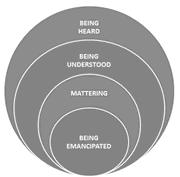CX: a little history
A decade ago, I saw the customer-first revolution. I’d watched the corporate tide wash in and out as different sectors first denied then embraced technology as part of brand experience. In both versions of the truth, the central tenet was greed. Any investment had to be for the absolute benefit of the organization itself. Immediate returns or shelve it. Zero innovation.
Businesses that had centuries of firsthand knowledge on how to improve premium real-word experience – the bespoke tailor, the boutique hotel, the private bank – were last in the queue to ideate how this relationship and value exchange could be delivered online. ‘Virtual’ was shorthand for superficial, and any customer service expert worth their salt knew that was the fastest path to failure.
But as digital matured, we began to speak out loud about free stuff. What if we give things away because it’s simply the right thing to do? What if our gift is to create usefulness? Why not try and build stuff that plugs into anything? Business models could be reimagined so that the core users of a service never pay (with money). Early social media felt liberating; open source felt good; APIs felt collaborative.
The customer was finally getting what they wanted and it gave them the upper hand. It reached way past brand engagement and e-commerce, through media and politics and straight into the heart of society to shift the balance of power. Change is good. Viva la revolution.
So powerful was the threat of being torched on Twitter or usurped by the next startup that brands woke up. The penny dropped. How could a far-deeper understanding of the technologies available (and their legitimate relevance to myriad operational priorities and ultimately their power to make a customer’s life simpler) come together in harmony?
Thus the CX economy was born.
Option paralysis
It's now wholly acceptable to talk about mutual gains for customers and brands without irony. The technology connects and entwines their dual destiny – but I’m still passionate about putting the customer first.

Smart businesses can monetize giving people what they need and deserve. But the challenge has shifted. The optimum experience can be articulated quite simply now. A seamless on-to off-to online journey is no longer difficult to imagine; in fact, it’s become an expectation. It’s the cost of entry to becoming a globally-loved brand.
Many brands broadly know what they’d like to achieve but struggle with the how. For 2022, the popular martech stack is about 10,000 logos strong. Niches within niches.
Having thousands of ways to skin a cat is daunting for businesses. Having option after option erodes brands’ confidence that they’re following the right path.
Keeping it simple: four human needs
It’s our duty to simplify these big questions. What are the core human needs that a digital experience must satisfy in order to balance supply and demand in this new economy?
First, we want it to be easy. Enjoyable. Intuitive. Suitably interactive.
Second, we want to be served the right content, at the right time on the right device.
Third, we want our data and behavior to combine and create something personal.
And fourth, we want our satisfaction and expectations to be managed throughout.
I may have just turned some complex stuff into four sentences, but it’s deliberate demystification. These four factors combined represent the holy grail of digital experience design. They require skilled and passionate people inside your business and across your partners – but with the right cornerstones in place, you won’t need 99.9% of those legion martech options.
All you need is a few essentials. A ‘thin’ interface that’s reactive, light and simple to edit. A ‘new breed’ digital asset management hub that talks to the interface above intelligently. A customer data platform that tests and personalizes in real-time and connects to artificial intelligence (AI) so it gets smarter over time. Some next-gen conversion rate optimization/de-optimization to control friction.
Most importantly, enjoy the mission. Once this approach is prolific across every sector, the battle for benefit is over. By meeting those four needs, you’ll have leveled the playing field permanently. Our consumer relationships with the brands we want to love will forever be a pleasure.









